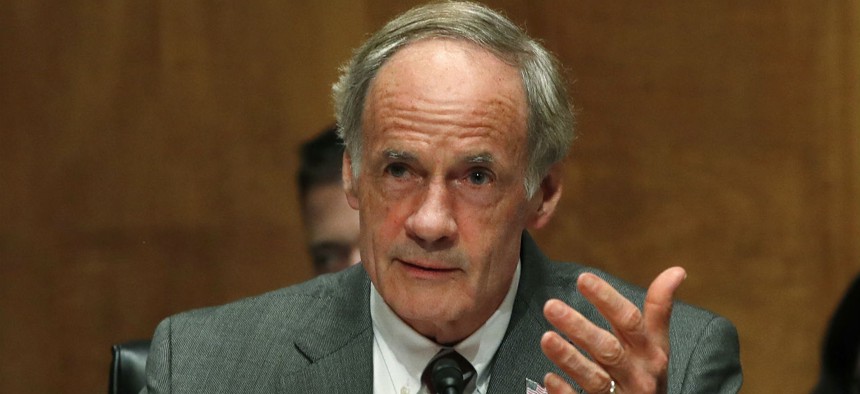Lawmakers, Agencies Look to Fix Leave Reform That Was Never Implemented
A measure intended to cap a specific use of paid time off may finally go into effect.
In 2016, President Obama signed into law a major reform to federal employees’ paid time off that members of both parties—and even employee groups—celebrated as a common-sense change that would reduce waste and improve accountability.
There was only one problem: The law never went into effect.
Lawmakers and the Trump administration are now working on a legislative fix to the reform that never was, seeking to clear the way for implementation after years of bureaucratic hold up. The law, tucked into the 2017 National Defense Authorization Act, sought to overhaul federal agencies’ use of administrative leave.
Currently, agencies use administrative leave at their discretion, usually when they are investigating an employee’s alleged misconduct. Loose guidelines for using the tool and liberal application have led to abuse, with many employees spending months or years at home collecting pay while agencies investigate them.
The practice also sometimes punishes employees because it keeps in limbo their job and ability to challenge the agency while they await a final decision on their work status. A Government Accountability Office report found that between 2011 and 2013 agencies placed 57,000 employees on administrative leave for more than one month. GAO found 263 cases in which employees were paid not to work for more than one year.
Under the new system, agencies were set to only put an employee on administrative leave to investigate misconduct or performance for a maximum of 10 days per calendar year. The law also instituted two new categories of paid leave: investigative and notice leave.
After the 10-day cap was met, agency officials would have needed to consider whether the employee was able to safely telework while the investigation continued. If that were not the case, the agency could have put the worker on investigative leave, which could be employed for up to three 30-day increments.
Notice leave was a new category that agencies could employ for the period after an employee received notice of the adverse action proposed in their case. Agencies would not be required to exhaust the 10 days of administrative leave before employing this tool.
OPM issued proposed regulations to implement the law in 2017. The agency subsequently received comments, however, alerting it to “legal and practical concerns” over the law’s impact on employees serving overseas, according to an agency spokesman.
“OPM’s final regulations on administrative leave, investigative leave and notice leave are still under review,” the spokesman said, adding OPM is “working with impacted agencies and Congress to address the problem.”
Last week, Sen. Tom Carper, D-Del., helped usher through the Senate Homeland Security and Governmental Affairs Committee an update to the administrative leave law that would address the implementation hiccup.
“It’s important for federal agencies, employees and taxpayers to have clarity on what paid administrative leave can and should be used for,” Carper said. “The current catch-all use of this term creates ambiguity that has led to misuse and abuse.”
The unintended consequence of the bill left Defense Department and other federal employees stationed overseas at risk of losing their ability to use administrative leave for rest and recuperation, as well as holidays, as they are currently entitled. Lawmakers became aware of the hold up in March, and met with OPM to discuss possible fixes. Defense, in consultation with other agencies, submitted a proposal to codify existing policy with regard to overseas employees and essentially exempt them from the administrative leave restrictions.
The new technical correction was included as an amendment to another effort to tweak a recent hiring law and lawmakers are hopeful it will move quickly through Congress.
OPM separately issued final regulations last year for weather and safety leave, a separate part of the administrative leave law.
NEXT STORY: Postal Supervisors Sue for Better Pay




